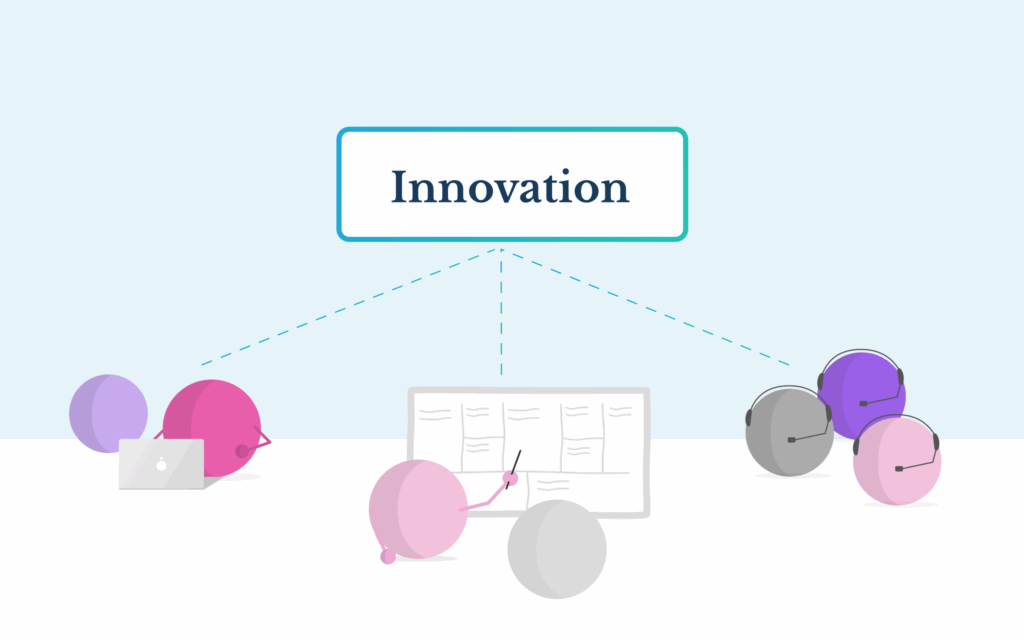Stop your Innovation Drain!
Too many teams suffer from what I call an Innovation Drain.
It’s what happens when people give up on their product function, and keep their potentially innovative ideas to themselves. Worst of all, the product managers often don’t even notice! To them, it just seems like a little bit of peace and quiet. But it spells disaster if you want to keep up in this world.
What’s happening?
I speak to teams all the time to get a sense of how they think about product management, and one phrase always haunts me: Product Management is a black hole. An impenetrable black box. A place where ideas go to die. No one knows why the product people make the decisions they do, or really, what they are working on.
I don’t hear this from the product people themselves. This is what their colleagues have to say about them. And it always breaks my heart, as I’m sure it’s not the product managers’ intention.
But the result is always the same: People across the company stop engaging with the product team. They stop submitting their ideas and telling the product people their suggestions or the neat ideas that cropped up as the result of their day-to-day work.
It results in an innovation drain.

Time is relative
It’s important to remember that time is relative, and feels different to different stakeholders who have different levels of buy-in.
When a salesperson suggests an idea, it often gets dropped with the product person. The product person can then choose to do something with it: Keep it in the backlog, devise and launch an experiment or feature out of it, or say no to it and close it off officially.
Six weeks later, when that salesperson drops into the product person’s DMs to ask if they’ve done anything with that idea they suggested, the product person is often a little lost. First of all, which idea? Six weeks ago was a long time, and they’ve had lots of suggestions to field since then. Once they do catch on, the answer is usually a disappointing one: Chances are, they’ve done nothing with that idea. It’s still sat in the backlog. After all, six weeks isn’t a lot of time at all. That’s a few sprints worth, perhaps a handful of things tested and launched in that time, but realistically, unless that idea that was suggested was particularly compelling, it probably didn’t shove everything else out of the way and get prioritized to the top.
But six weeks to a salesperson is a long time. That could make or break a deal they were working on. It’s frustrating for them to hear their idea went nowhere, especially if they don’t see what else of value is being done by the product team.
Are you suffering from an Innovation Drain?
It’s not always easy to immediately spot you’re suffering from the Innovation Drain. After all, it’s harder to spot the absence of something rather than the presence of an acute problem.
But it’ll make itself known in the quality of your backlog and how much work you have to do as a product manager yourself. It’s never your job to have all the answers—it’s your job to ask the best questions. If you’re finding yourself having to come up with all the ideas, and turn all the existing ideas into workable experiments and solutions, your team isn’t engaging with your product management process enough.
Your time isn’t meant to be wasted on constantly writing specs and fine-grained user stories, or writing updates to team members who don’t bother replying.
You should be focused on guiding a discovery process that encompasses fast iteration and experimentation, and lots of engagement and input from your team!
The one way you’re making your Innovation Drain worse!
A lot of product teams do this. They have good intentions, but it has bad knock-on effects.
It’s about how you ask for feedback and ideas. See, if you’re outside your product team, one of the best ways you can help make sure your ideas are getting attention is to give more context to them. Add a business case and talk about what problem it’s going to solve and the value it’ll provide when you solve it. Tag it up with details around the product and functional area, or target market details. All this stuff helps, really!
But where product people go wrong is when they create convoluted forms that require people to enter all these details each time they want to suggest something. Sure, it means that every idea that gets added to the backlog is more fleshed out and easier to justify… but you can also be sure that a bunch of people simply didn’t bother entering their ideas. Remember, your colleagues have jobs to do, and ideas sometimes come at them fast and at random times. You want to encourage them to capture those moments of potential brilliance. If you’ve created a tiring system of opening a particular tool and filling out a bunch of forms, you’re losing potentially valuable and innovative ideas.

This was one of the core problems that ProdPad solved from the very beginning. We built it to focus on a simple form, that could exist right where your team worked (eg. as a Slack entry point, or a Chrome extension, or an idea email dropbox). Just enter your idea – no other fields required, not even a title (people generally are terrible at creating subject lines/titles anyways), though give the option to add more if they want to. ProdPad then has a system of managing the influx of ideas to help the product manager to gather the additional information over time. Ideas are initially held in an ‘Unread’ state, so they don’t muddy up the tidier main backlog. The original idea submitter has access to, and is encouraged to jump back into the idea to capture the extra details as it comes to them and as they have time. Gone are the days of people just dropping half-formed ideas on the product person’s lap and walking away – with ProdPad, the idea submission is the beginning of a conversation where the product person can pull the right information from the right team players to fill out each idea as they come in and are worked through the backlog.
Getting out of the Innovation Drain
A terrible thing for a company is a product team that makes decisions in isolation, without input or insights from their team.
It might be less chaotic for the product people, but it means that they’re less informed about the problems and the potential solutions they might try. This innovation drain is real and can be costly in the long run.
Aspire to achieve the opposite
A team that innovates together. A well functioning product team should provide three key things:
Transparency. The rest of the team needs to understand what the company goals are, and what the product team’s goals are, so they can contribute to the conversation meaningfully. They need to understand what decisions are being made, and why. They need to know where their ideas keep ending up, even if they are in the ‘not yet’ pile.
Trust. The team needs to have faith that their ideas aren’t just being tossed aside. In general, people get that not everything can be built, but this trust can only be gained if they know what does happen when they pitch their ideas in.
Collaboration. Everyone, throughout the organization, should be able to pitch in ideas, and see and discuss other ideas that are on the table. This is one of the best ways to generate new innovative takes on problems, and find interesting workarounds that you wouldn’t have otherwise come across.
As a good product team, you should demystify the product management process. You should draw in, include, and engage the rest of their team in your product innovation flow. You have opportunities to make it easier to submit ideas and feedback that they hear, and to see where their ideas have ended up so they can continue to contribute to them meaningfully to help usher them along. Product management isn’t just for the product managers—it’s a whole team effort—and when it’s done well, innovation happens naturally and effectively.
Use these tips and guidelines to spot if you’re in an Innovation Drain, and start taking some steps to get out of the spiral. If you need tools to help you with this, try ProdPad—specifically designed to engage the team in product management best practices and help the product team achieve their aims.
